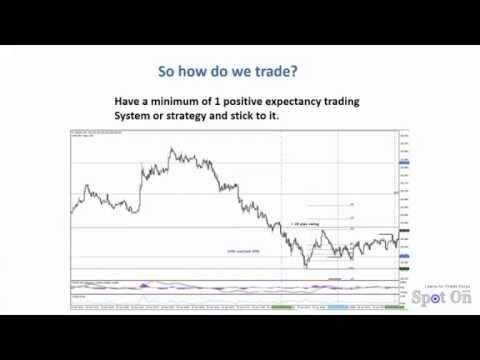-
 Constructora Triio
Constructora Triio
-
 Inmobiliaria Triio
Inmobiliaria Triio
-
 Proyectos
Proyectos
-
Conóce nuestras empresas y afiliados
By identifying and analyzing these patterns, traders can potentially profit from market movements. It provides a technical analysis of price patterns related to changes in investor sentiment and psychology. The theory identifies impulse waves that establish a pattern and corrective waves that oppose the larger trend. It assumes that stock price movements can be predicted because they move in repeating up-and-down patterns. Elliott Wave Theory is often used by traders and analysts to identify potential price movements in financial markets.
We will wait to develop the first 3 waves of a five Elliott Wave pattern. The first secret of Elliott Wave theory is that within each wave cycle there is https://forex-world.net/strategies/7-powerful-forex-risk-management-strategies/ an equal number of waves equal with Fibonacci numbers. Our favorite way to play the Elliott Wave strategy is to let the first 4 wave movement unfold.
Therefore, the subsequent waves remain part of the third wave rather than forming 4 and 5. Elliott Wave theory is one key method of forming market predictions, with a host of rules and complimentary theories providing https://trading-market.org/how-to-use-long-and-short-position-drawing-tools/ a key tool for technical analysts. We want to clarify that IG International does not have an official Line account at this time. We have not established any official presence on Line messaging platform.

Elliott believed the market was much less “chaotic” than many traders assumed. He described some of the patterns he observed as different types of waves. Before we begin our discussion on how to trade Elliott Wave, let’s learn how the Elliott Wave theory was discovered. You will learn why the Elliott wave strategy is so popular today.
In a bear market the dominant trend is downward, and the pattern is reversed—five waves down and three up. Motive waves always move with the trend, while corrective waves move against it. The Elliott wave principle posits that collective trader psychology, a form of crowd psychology, moves between optimism and pessimism in repeating sequences of intensity and duration. These mood swings create patterns in the price movements of markets at every degree of trend or time scale. The Elliott Wave Theory is a technical analysis approach that attempts to forecast financial market trends and cycles by identifying repeating patterns in market price movements.
Secondly, traders can label those price swings with numbers (1-5) and letters (A-C) according to the Elliott Wave Theory. My SWAT course explains how to use these tools and concepts correctly to analyse and trade wave patterns. Elliott Wave Theory suggests that impulse waves and corrective waves form different patterns that can be used to predict future price movements in financial markets.
The sub-waves may be composed of complex combinations, not just of zigzags (shown) or flats. Although it may look easy in theory to spot a triangle, it may take a little practice to become familiar with them in the market. Most flats, however, don’t look as neat as this, but are variations on the theme.

Conversely, in a downward trend, the impulse wave comprises three downward waves (1, 3, 5) and two upward waves (2 and 4). TrendSpider is a suite of research, analysis, and trading tools (collectively, the «platform) that are designed to assist traders and investors in making their own decisions. Our platform, its features, capabilities, and market data feeds are provided ‘as-is’ and without warranty. One thing to remember about horizontal triangles is that they always appear in the position prior to the final move of the pattern, or as the final pattern in a combination (described below).
The most commonly used Fibonacci time zones are 38.2%, 50%, and 61.8% of the time taken for the previous wave to complete. Fibonacci relationships are an essential component of the Elliott Wave Theory. Fibonacci ratios are mathematical ratios derived from the Fibonacci sequence (0, 1, 1, 2, 3, 5, 8, 13, 21, 34, 55, 89, 144, etc.). Conversely, in a downward trend, the first wave (A) is a downward wave, followed by a sideways wave (B), and then another downward wave (C). In a downward trend, the first wave (A) is an upward wave, followed by a downward wave (B), and then an upward wave (C). This picture describes where the differing types of investors decides to get in and out of the market.
He believed that stock markets, generally thought to behave in a somewhat random and chaotic manner, in fact, traded in repetitive patterns. The ongoing Bitcoin (BTC) price correction could continue as per almost a century-old technical analysis principle called the «Elliott Wave Theory.» Ralph Nelson Elliott was a professional accountant born in 1871 who developed what is known today as being the Elliott Wave theory. The Elliott Wave Principle https://currency-trading.org/education/the-camarilla-pivot-points-indicator/ by Ralph Nelson Elliott reveals in detail his theory about market behavior and how prices in any market move in specific patterns. The Elliott Wave theory is similar to the Dow Theory in the sense that both market theories describe the idea that the up and down prices are influenced by crowd psychology. However, the Elliott Wave and Dow Theory also differ because in Elliott Wave analysis the trend is broken down in far greater detail.